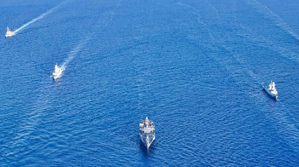Freight rates from Asia spike 53% in a month amid Red Sea attacks
Freight rates from Asia have spiked 53 per cent in a month depending on the route plus container shipping giants and oil supermajor British Petroleum have halted transit via the Red Sea/Suez Canal route after the attacks, Madhavi Arora, Lead Economist, Emkay Global Financial Services, has said.
The route assumed even more importance post Ukraine war as Russia shifted its supply largely to Asia post sanctions, Arora said.
“We are ending the year with higher global freight and insurance rates, possible upside risk to oil and global trade and re-emergence of the potential supply chain equals cost push Inflation pressures. Apart from other factors, this newly built supply chain pressure will further play spoiler in heavy mkt bets of 150bps Fed cuts in 2024 starting March,” Arora said.
The cost of shipping goods has increased by 45 per cent in the past week as major companies paused activity in the Red Sea global supply artery and chose diversions that can add an extra two weeks to journey times, Sky News reported.
The most widely used measure of freight cost, the Shanghai Containerised Freight Index (SCFI), rose by almost half to $1,497 per container from last Friday.
The SCFI measures the average cost of a 20ft-long container being shipped from Shanghai to Europe. Last week, that cost was $1,029.
There are also indications that the figure could go up even further, Sky News reported.
Maersk and CMA CGN have introduced new charges to transport goods along many of the world’s busiest shipping routes after re-directing their vessels away from the Red Sea because of attacks, CNN reported.
Denmark’s Maersk said on Thursday that it will impose a Transit Disruption Surcharge (TDS) immediately on 27 trade routes and an Emergency Contingency Surcharge (ECS) on those same routes from the new year, citing “risks, delays and difficulties” in sailing through the Red Sea.
Likewise, France’s CMA CGM announced on Thursday that it will immediately introduce surcharges on 11 trade routes, explaining that several of its vessels had been re-routed around the southern tip of Africa for safety reasons, CNN reported.

